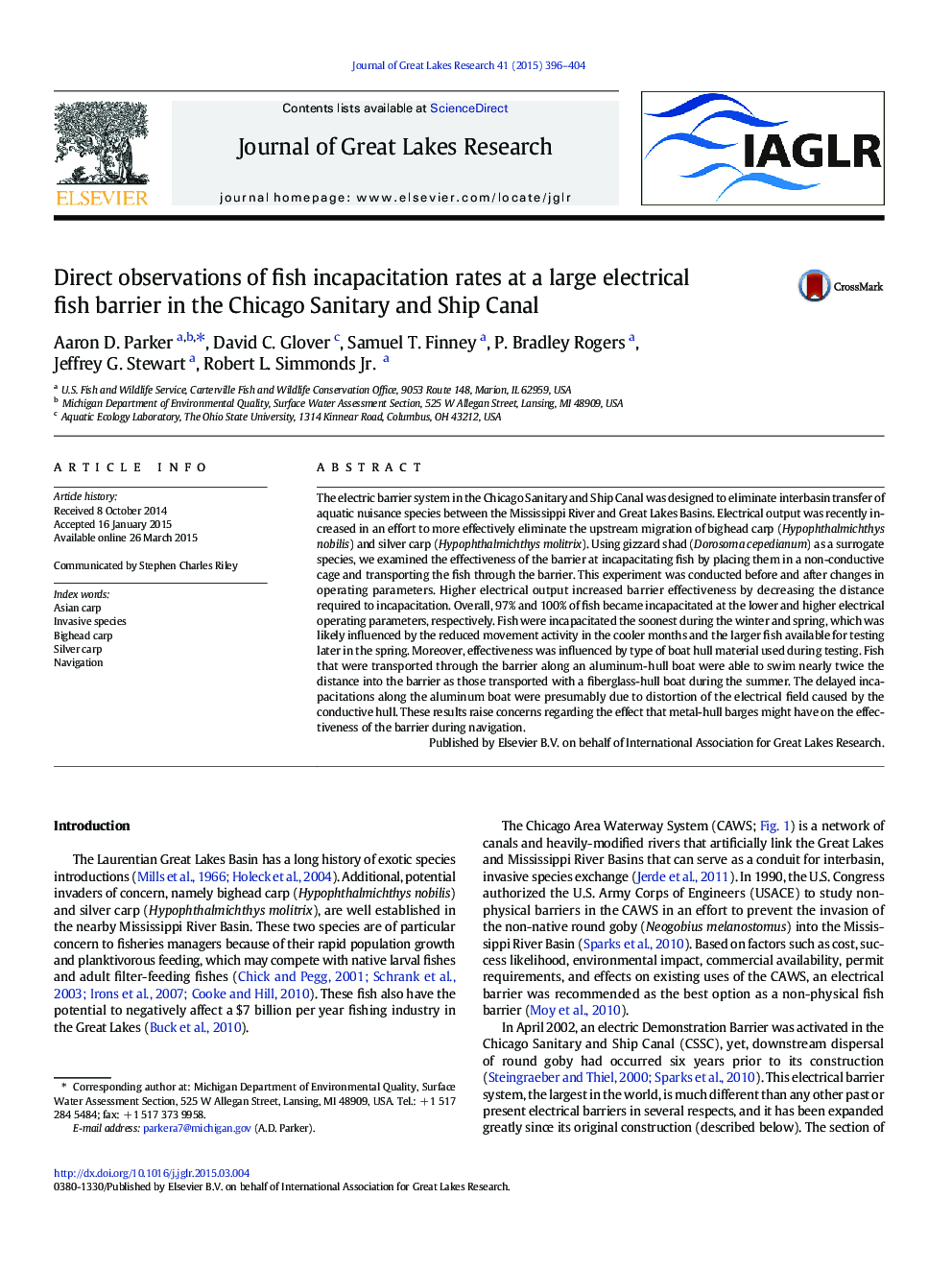| Article ID | Journal | Published Year | Pages | File Type |
|---|---|---|---|---|
| 6305000 | Journal of Great Lakes Research | 2015 | 9 Pages |
Abstract
The electric barrier system in the Chicago Sanitary and Ship Canal was designed to eliminate interbasin transfer of aquatic nuisance species between the Mississippi River and Great Lakes Basins. Electrical output was recently increased in an effort to more effectively eliminate the upstream migration of bighead carp (Hypophthalmichthys nobilis) and silver carp (Hypophthalmichthys molitrix). Using gizzard shad (Dorosoma cepedianum) as a surrogate species, we examined the effectiveness of the barrier at incapacitating fish by placing them in a non-conductive cage and transporting the fish through the barrier. This experiment was conducted before and after changes in operating parameters. Higher electrical output increased barrier effectiveness by decreasing the distance required to incapacitation. Overall, 97% and 100% of fish became incapacitated at the lower and higher electrical operating parameters, respectively. Fish were incapacitated the soonest during the winter and spring, which was likely influenced by the reduced movement activity in the cooler months and the larger fish available for testing later in the spring. Moreover, effectiveness was influenced by type of boat hull material used during testing. Fish that were transported through the barrier along an aluminum-hull boat were able to swim nearly twice the distance into the barrier as those transported with a fiberglass-hull boat during the summer. The delayed incapacitations along the aluminum boat were presumably due to distortion of the electrical field caused by the conductive hull. These results raise concerns regarding the effect that metal-hull barges might have on the effectiveness of the barrier during navigation.
Related Topics
Physical Sciences and Engineering
Earth and Planetary Sciences
Earth and Planetary Sciences (General)
Authors
Aaron D. Parker, David C. Glover, Samuel T. Finney, P. Bradley Rogers, Jeffrey G. Stewart, Robert L. Jr.,
